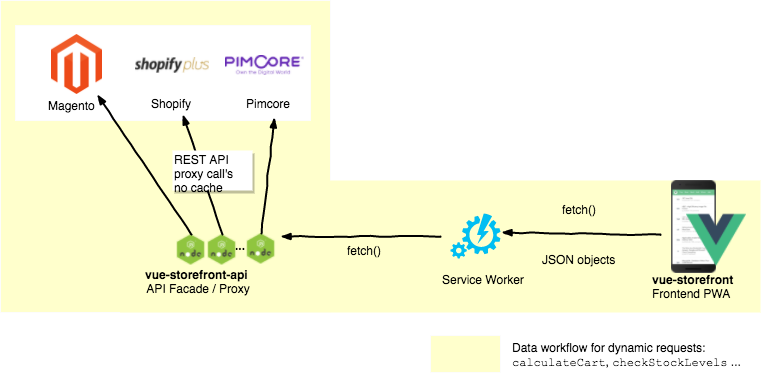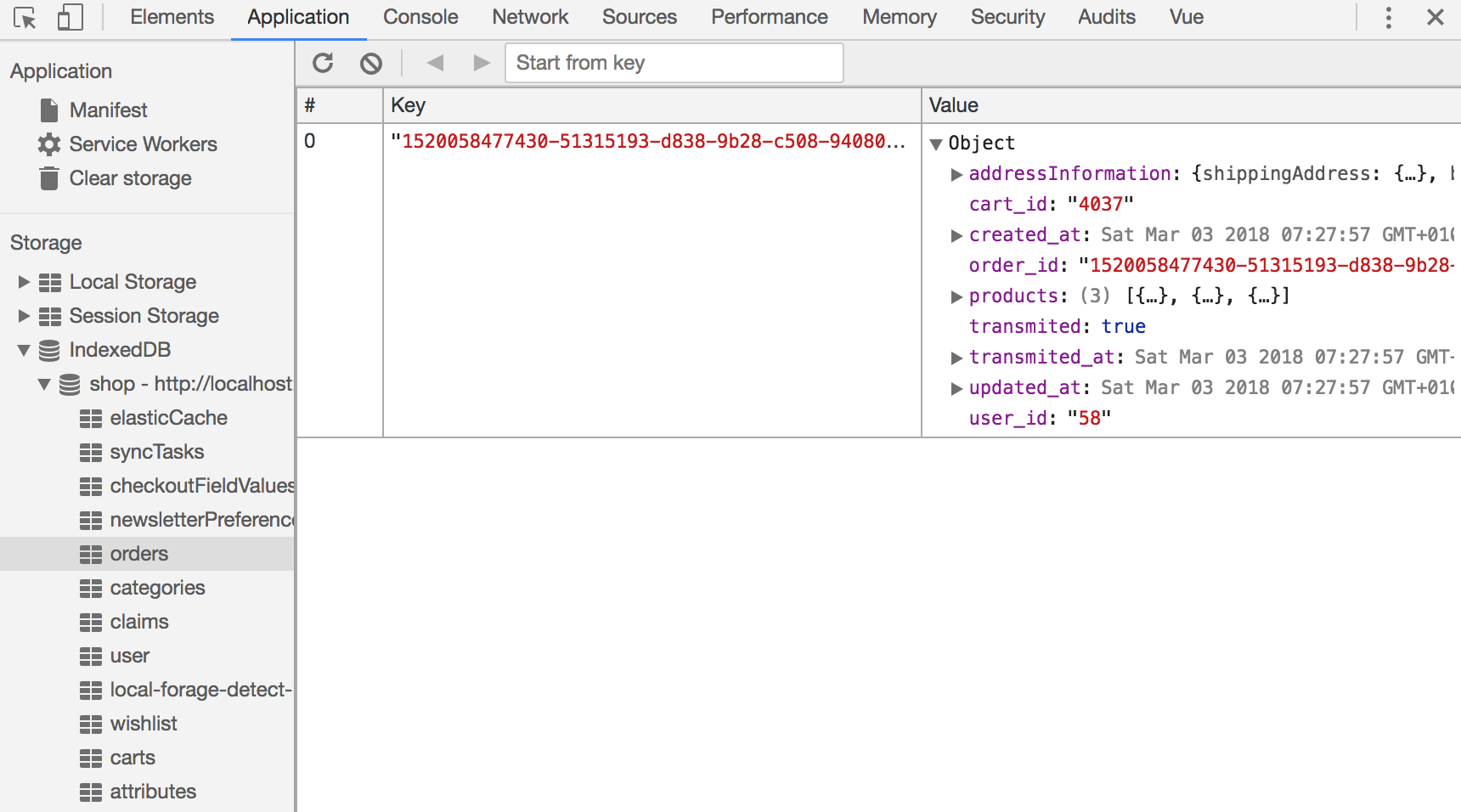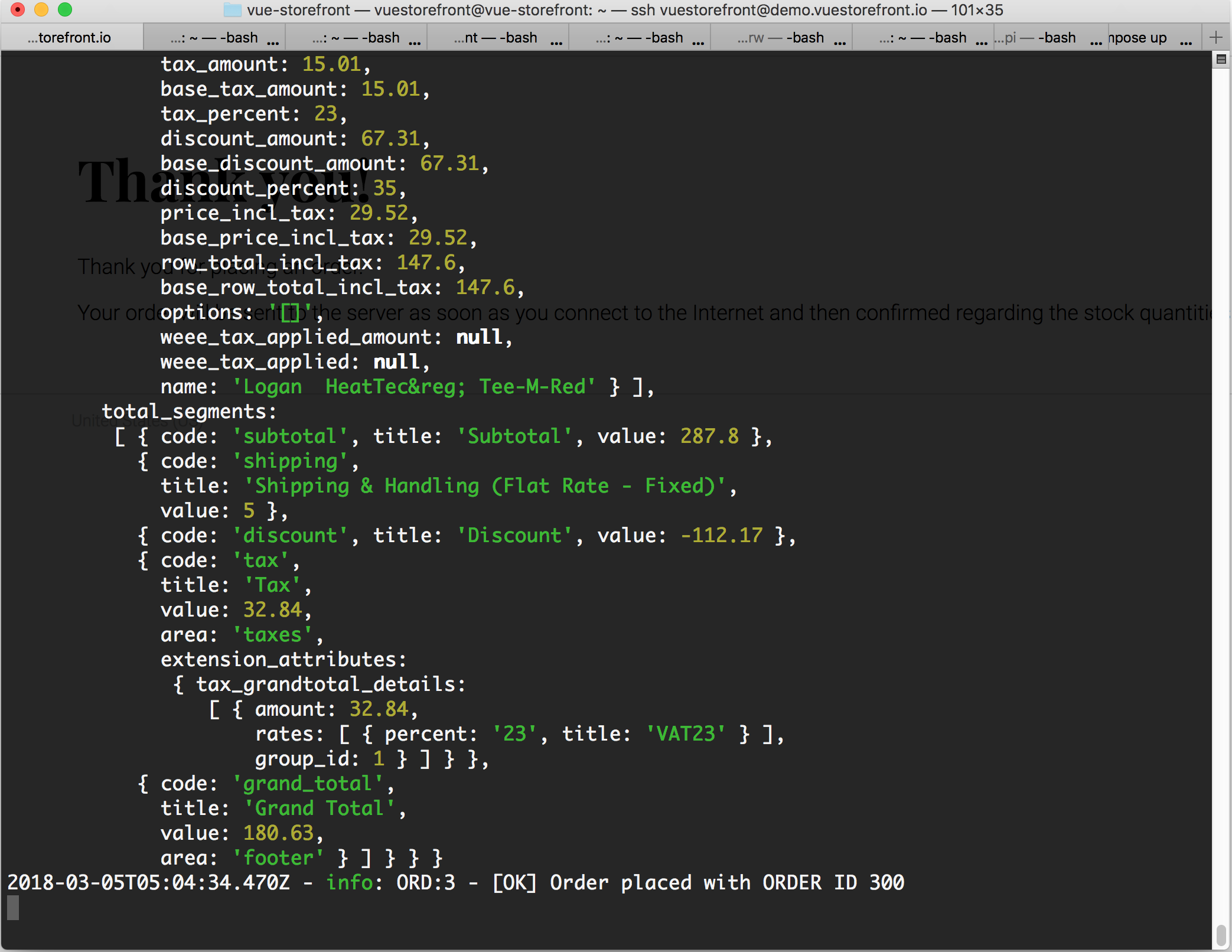# Totals and cart sync with Magento
One of the key principles of the Vue Storefront architecture is full scalability. We've achieved very good performance results by not relying on the Magento 2/CMS API performance. By implementing the "divide and conquer" rule, we created the middleware and external data store for the catalog using Elasticsearch.
That was our first goal, but the second was to provide the full data safety and reliability to the business so we never encounter situations like stocks and prices being de-synchronized or the discount rules not being applied. It can ruin the business, no matter the performance 😃
# Cart and Totals sync
This is the reason we have the direct shopping cart sync with Magento 2. Whenever the user adds something to the cart, we're checking the stock and synchronizing the local in-browser cart with CMS.

In the backward direction, we're always getting the current totals, after Magento shopping cart rules and discounts are applied to display the proper data to the user. This synchronization is implemented to keep the Vue Storefront platform-agnostic. The vue-storefront-api layer is in charge of translating the platform-specific API formats to the Vue Storefront general-data abstraction.

As you can see, the synchronization works like a sequence of network calls to the vue-storefront-api:
- The
pullmethod is executed to get the current user's Magento cart. - On the client side, the logic is checking which elements are new on the client side, server side, removed.
- In our case, one element doesn't exist on the server side so we're calling an
updatemethod to add it to the server cart. - Then, we call
totalsto get the current row values and general totals for the cart.
# How to make this feature work
By default, the cart and totals sync is disabled. To make it work, you just need to follow the steps described below:
Generate the Magento 2 API accesses. In our first tutorial, there is an explanation on how to do this.
Use the OAuth keys from the previous step to properly configure the
vue-storefront-apidata layer (it should've been installed locally on your computer / server). To do so, you need to modify theconf/local.jsonand paste the authorization data to themagento2.apisection:
"magento2": {
"url": "http://magento2.demo-1.xyz.com",
"imgUrl": "http://localhost:8080/media/catalog/product",
"magentoUserName": "",
"magentoUserPassword": "",
"httpUserName": "",
"httpUserPassword": "",
"api": {
"url": "http://demo-magento2.vuestorefront.io/rest",
"consumerKey": "byv3730rhoulpopcq64don8ukb8lf2gq",
"consumerSecret": "u9q4fcobv7vfx9td80oupa6uhexc27rb",
"accessToken": "040xx3qy7s0j28o3q0exrfop579cy20m",
"accessTokenSecret": "7qunl3p505rubmr7u1ijt7odyialnih9"
}
},
Please check the conf/default.json (opens new window) for the reference.
- Move to your
vue-storefrontinstallation catalog and modify theconfig/local.json. You need to change thecartsection to switch thesynchronizeandsynchronize_totalsflags to true:
"cart": {
"synchronize": false,
"synchronize_totals": false,
"create_endpoint": "http://localhost:8080/api/cart/create?token={{token}}",
"updateitem_endpoint": "http://localhost:8080/api/cart/update?token={{token}}&cartId={{cartId}}",
"deleteitem_endpoint": "http://localhost:8080/api/cart/delete?token={{token}}&cartId={{cartId}}",
"pull_endpoint": "http://localhost:8080/api/cart/pull?token={{token}}&cartId={{cartId}}",
"totals_endpoint": "http://localhost:8080/api/cart/totals?token={{token}}&cartId={{cartId}}",
"paymentmethods_endpoint": "http://localhost:8080/api/cart/payment-methods?token={{token}}&cartId={{cartId}}",
"shippingmethods_endpoint": "http://localhost:8080/api/cart/shipping-methods?token={{token}}&cartId={{cartId}}",
"shippinginfo_endpoint": "http://localhost:8080/api/cart/shipping-information?token={{token}}&cartId={{cartId}}",
"collecttotals_endpoint": "http://localhost:8080/api/cart/collect-totals?token={{token}}&cartId={{cartId}}"
},
Please check the conf/default.json (opens new window) for a reference.
# Prices sync
The last missing block is the catalog prices sync. This can be very easily enabled using the feature called Dynamic Prices. Please check Dynamic Prices howto to switch this feature on.
# Order sync
One of the cool features of Vue Storefront is queued order sync. This means whenever a user makes an order in the application, we store the order in the local browser cache (indexedDb instance) and send it to the server as soon as the Internet connection is available.

On the server side, the vue-storefront-api is the first line that the order is crossing on its way back to Magento 2. No matter if the shopping cart was synchronized (as described above) or not, the order will be converted to a Magento 2 object.
The server API stores the order in the queue where it's processed by the order_2_magento (opens new window) worker process. We do support multiple types of orders: for guest users and logged in, with already synchronized carts or not, etc.
This process doesn't require much additional configuration:
- You must have the Magento2 API access configures in the
config/local.jsonfile ofvue-storefront-api - You must have the "Orders" section marked On within the "Permissions" section of Magento Integration (see the previous tutorial for the reference on how to set it up).
- After the configuration step You just run
yarn o2minside yourvue-storefront-apidirectory.
